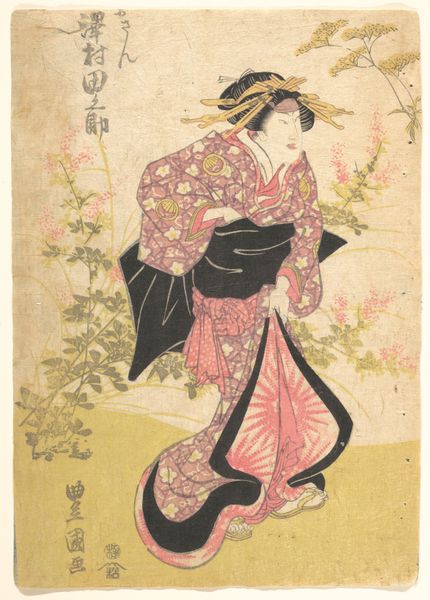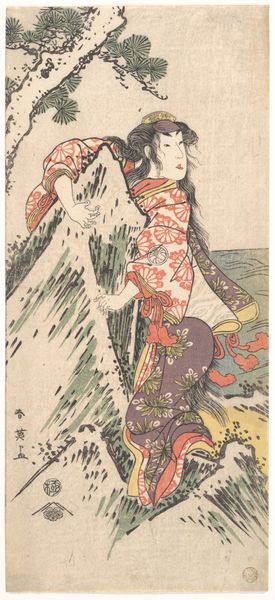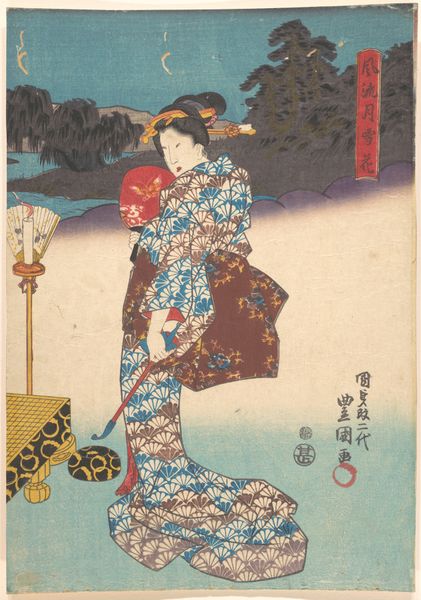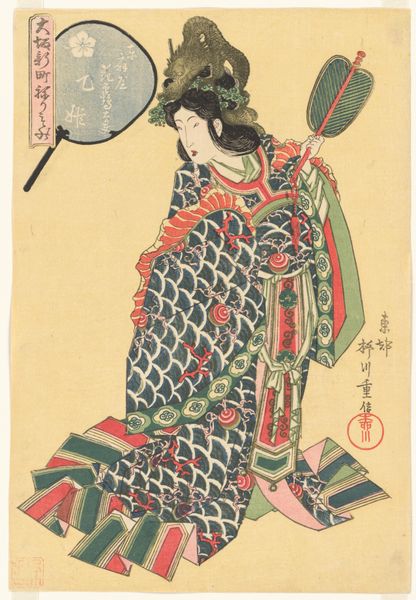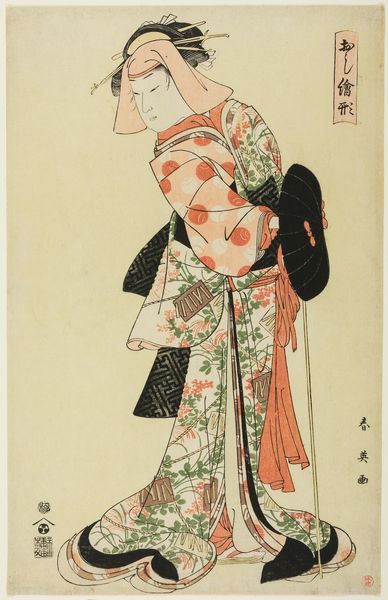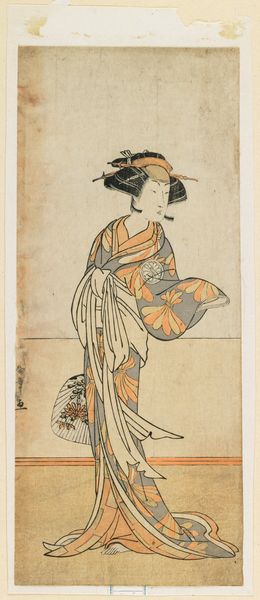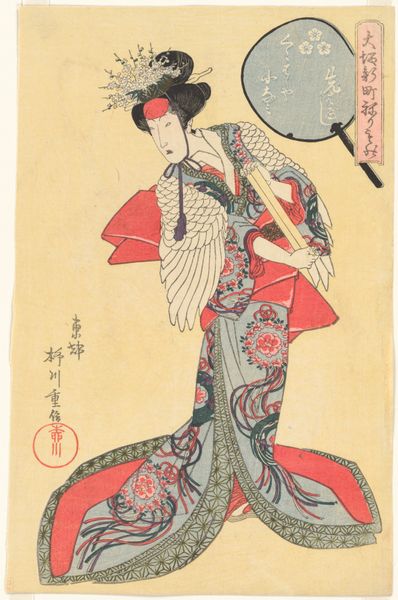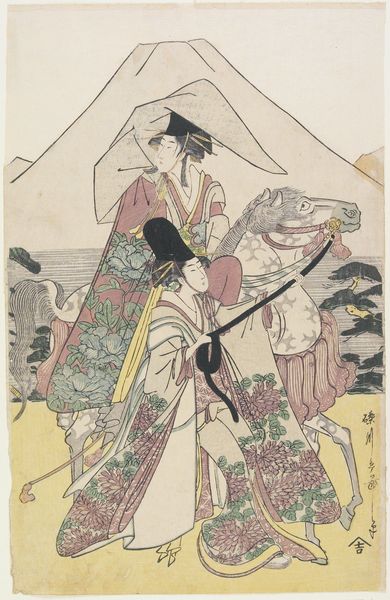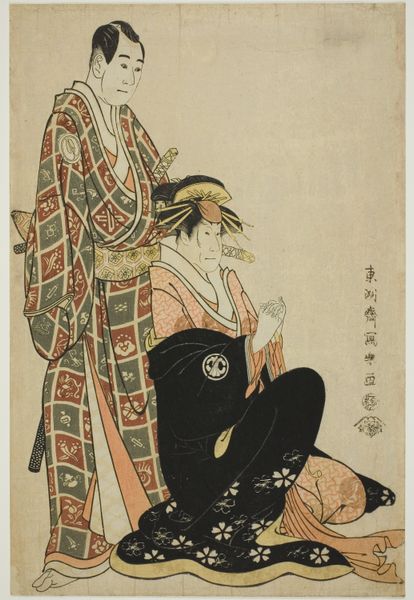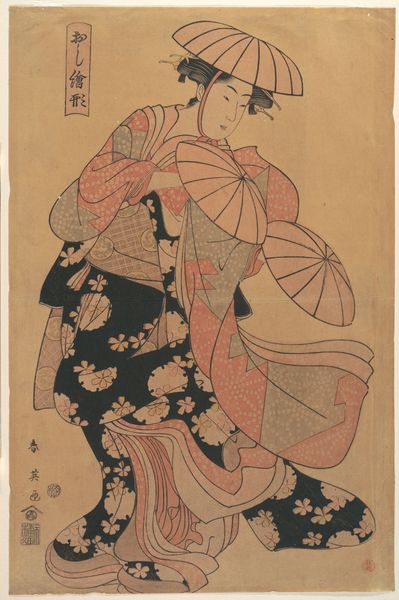
#
portrait
# print
#
asian-art
#
ukiyo-e
#
genre-painting
Dimensions: Image: 13 3/4 × 9 5/8 in. (34.9 × 24.4 cm)
Copyright: Public Domain
Editor: Here we have Utagawa Kunisada's "Print," made sometime between 1800 and 1865. It's currently held at the Metropolitan Museum of Art. What I find striking is the almost geometric arrangement of patterns and shapes, creating an intriguing flattening of space. What do you see in this piece? Curator: The interplay of line and color is indeed compelling. Focus, if you will, on the surface quality: the arrangement of flat, discrete shapes defines the composition. Observe how the linear contours articulate the figure's form, while internal patterning within the robes enlivens the visual field. How do these different visual components work together? Editor: Well, the patterns almost seem to fight for dominance, but the lines contain them, giving the eye a place to rest before jumping to the next burst of design. Curator: Precisely. It’s also critical to recognize the graphic handling of the umbrella and the hair ornaments—each element is rendered with meticulous precision, flattening depth. Would you agree that we should explore the interplay between these graphic and decorative elements? Editor: I do! It sounds like the graphic quality emphasizes flatness and pattern, while the ornaments highlight detail. Curator: Precisely. Ultimately, the brilliance of the print lies in this carefully calibrated tension between surface and structure. Through Kunisada’s meticulous use of line, shape, and color, this visual organization speaks of form. Editor: I hadn't thought about it quite like that before, but you've opened my eyes to the delicate compositional and thematic tensions within the work. Thanks for the insight!
Comments
No comments
Be the first to comment and join the conversation on the ultimate creative platform.
